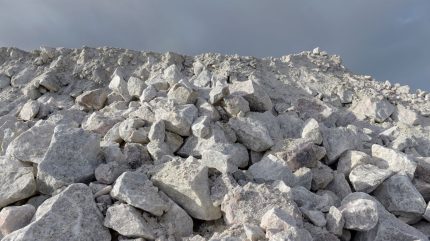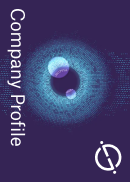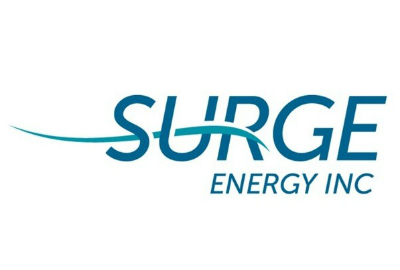
Dubbed “white gold” by the World Economic Forum in early 2023, lithium is crucial to the global energy transition.
Today, 80% of all refined and processed lithium on the market ultimately finds itself used in the batteries of electric vehicles (EVs). Although that market has cooled a little recently, demand is going nowhere.
Late last year, Sarah Maryssael, then the chief strategy officer of global lithium technology company Livent, said: “It is foolish to think we could ever remove our dependence on China.”
She was speaking of China’s increasingly dominant stranglehold on the lithium refining market; not only on its shores, but around the world thanks to the billions of dollars the Chinese Government is investing in refining facilities, most notably in Africa.
With lithium demand set to rocket, tripling by the end of this decade, according to the International Energy Agency (IEA), it is little wonder governments are looking to break China’s grip.
Australia is one of them. Being the world’s single biggest supplier of spodumene, at more than 50% of total global output, its government has put lithium and other critical minerals at the heart of its economic plans.
Access the most comprehensive Company Profiles on the market, powered by GlobalData. Save hours of research. Gain competitive edge.

Your download email will arrive shortly
We are confident about the unique quality of our Company Profiles. However, we want you to make the most beneficial decision for your business, so we offer a free sample that you can download by submitting the below form
By GlobalData
Australia looks to capitalise on the energy transition
In mid-2023, the Australian Government announced the Critical Minerals Strategy 2023–2030, stating that the country’s minerals sector “is well placed to seize the opportunities of the clean energy transition”. It said Australia’s rich geological reserves, extracting expertise and track record as a reliable producer and exporter could be leveraged to create diverse, resilient and sustainable supply chains through international partnerships.
Its ambitions were clear: to build sovereign capability in processing to become a “renewable energy superpower”. Australia wants to extract more value from its resources itself, rather than shipping the raw constituents abroad. The programme would tie into its Future Made in Australia agenda announced during the 2024–25 budget. In it the federal government said it would invest A$22.7bn over the coming decade to maximise the economic and industrial benefits the move to net zero would offer.
It added that critical minerals are the “building blocks” for a range of sectors including agritech, clean energy, computing, defence, manufacturing, medicine, space, telecommunications and transport. “Refining and processing critical minerals here will allow us to move along global supply chains to capture more of the value and contribute to creating more diverse, resilient and sustainable global supply chains,” it added.
The Australian Government, ahead of announcing the Critical Minerals Strategy 2023–2030, had already signalled its intent to simplify the approvals process for critical minerals projects – making them more defined, transparent and predictable. This strategy built on that, with what was a less than ambiguous attempt to address the nation’s sparce refining and processing infrastructure.
But to do so, funding would be key – and so it came. Critical mineral exploration received a A$225m ($145.66m) boost by way of the Exploring for the Future programme, which would help digitally map Australia’s resources. A fund of A$100m in grants was made available for early and mid-stage projects through the Critical Minerals Development programme. In addition, almost A$53m was earmarked for attracting international investment; a A$120bn Infrastructure Investment programme to develop infrastructure; and billions were set aside for the training of a skilled native workforce.
Australia’s incentives come amid challenging lithium market conditions
Both initiatives came at a time when the cost of lithium had dropped, massively, with real-world impacts. In September, Arcadium Lithium said it would place its Mt Cattlin mine in Western Australia (WA) into care and maintenance by early 2025, thanks to the continued decline in spodumene prices. Weeks later and the company announced it had accepted a takeover bid from mining giant Rio Tinto, stating it was “facing challenging market conditions” and that the outlook for lithium prices looked set to remain depressed.
In January, Adelaide-based Core Lithium said it was cutting 150 jobs and suspending operations at its Finniss site. Albemarle added to woes in August with news it may cut 300 posts it its Kemerton lithium hydroxide conversion facility at its site near Bunbury.
Despite this, the Australian Government is resolute. “The Future Made in Australia plan puts the resources industry at the heart of the Albanese Government’s plan to grow the economy, to create jobs and to secure our future,” Minister for Resources and Minister for Northern Australia Madeleine King told the Committee for Economic Development of Australia’s State of the Nation conference in June. “It will secure Australia’s place in a changing global economic and strategic landscape.”
A spokesperson for the Department of Industry, Science and Resources went further, telling Mining Technology: “Increasing Australia’s sovereign capability in mineral processing will involve undertaking more concentration, separation, refining and smelting of our resources onshore.” The strategy, they added, would grow Australia’s geostrategic and economic benefits of its critical minerals sector; allow it to become a globally significant producer of raw and processed critical minerals; and support diverse, resilient and sustainable supply chains.
To do this, the spokesperson continues, there were several tax incentives. “The government will provide A$7bn over the next decade – and an average of A$1.5bn per annum from 2034–35 to 2040–41 – to support critical minerals processing in Australia through the new Critical Minerals Production Tax Incentive.”
Beginning in July 2027 and running to the end of June 2040, the scheme will provide a refundable tax offset of 10% of eligible Australian processing costs for critical minerals. “Eligible facilities will be able to claim it for up to ten years,” the spokesperson explains, adding that companies could claim through their annual income tax return.
Australia’s lithium growth plans
It seems some stakeholders are also on board, despite the tough conditions. In June 2024, Pilbara Minerals announced plans to expand its WA Pilgangoora operation.
The company, which said it was embarking on a pre-feasibility study for its P2000 Project, hopes to yield 1.9 million tonnes per annum (mpta) in the first ten years, with more than 2mtpa during the initial six years post-ramp up. Although no final decision on whether to proceed is expected before the end of 2025, it is a signal of the optimism the company has for lithium markets.
Just weeks later we reported on Liontown Resources’ commencement of lithium production at its Kathleen Valley Lithium, with ambitions to the process the equivalent of up to 3mtpa in coming months. Tony Ottaviano, managing director and CEO, said: “This is a monumental moment… and marks our transition from a construction project to a producer of high-quality lithium concentrate.”
Although Liontown has redesigned its mine to prioritise higher-margin underground ore and reduce operating and capital costs, its 2.8mtpa plans mean it can continue to fulfil customer commitments.
Tees Valley Lithium has also said it plans to build Australia’s first stand-alone lithium sulphate processing facility. The multimillion dollar project would see the construction of a four-production-line facility at Port Hedland in Western Australia, adding to the construction of a lithium hydroxide refinery in the UK. The company wants to refine Australia-mined spodumene in Australia before shipping it to its Redcar processing site, supplying European EV carmakers with battery-grade lithium hydroxide. The operation, it believes, will cut the amount of waste shipped globally.
Huge economic potential
Despite depressed market prices it seems Australia has set its sights on developing a refining sector. According to the Energy Institute’s EI Knowledge, Insights and Research Centre, in 2023, Australia’s lithium production outstripped that of its two leading lithium-producing rivals – Chile and China – almost matching their combined total. Australia produced 86,000 tonnes (t), whilst Chile produced 56,500t and China 33,000t.
If Australia can get it right, the economics of spodumene versus refined lithium hydroxide and lithium carbonate could secure it superpower status, and the potential for further investment. According to the Australian Office of the Chief Economist, 98% of the country’s produced spodumene was exported to China in 2022–23, delivering China huge economic benefits. Then, the raw material was $747/t, compared with $10,280/t for lithium carbonate.
Reflecting on the Critical Minerals Strategy, King said it outlines the enormous opportunity to develop the sector and new downstream industries, supporting the economy and global efforts to lower emissions.
But, she cautioned, having an abundance of resources and a strategy to capitalise on them is just the start. “While the potential is great, so too are the challenges. The strategy makes it clear our natural minerals endowment provides a foot in the door, but we must do more to create Australian jobs and capitalise on this unique opportunity.”




